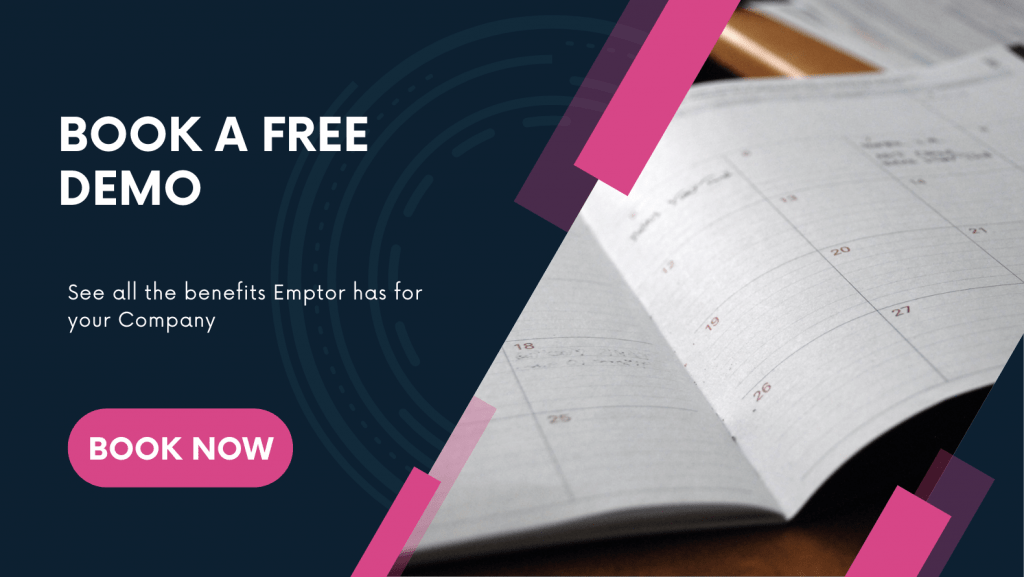In 2023 businesses are continually looking for new ways to improve their operations and maximize employee engagement. One of the most effective methods for achieving this goal is through the use of HR tech tools.
HR Tech refers to the use of technology to automate HR processes. It includes various tools, such as Applicant Tracking Systems (ATS), Learning Management Systems (LMS), Performance Management Systems (PMS), among others. The main aim of HR Tech is to streamline HR processes, making them more efficient and effective.
In this article, we’ll explore some of the most popular HR tech tools available and how they can be used to enhance employee engagement.
1.Applicant tracking systems (ATS)
An ATS its a software that allows employers to collect and organize job applications, track candidates’ progress through the hiring process, and communicate with candidates. An ATS can also help to automate certain parts of the hiring process, such as resume screening and scheduling interviews.Some of the best options that you can explore are:
1. Workable
Workable is a popular ATS option that is well-suited for small to mid-sized businesses. Prices starting at 129 usd in the Paygo option, 299 usd in standard option, 599 usd in premier option, standard and premiere options come with a 15 day trial.
2. JazzHR
JazzHR is another popular ATS option that offers a range of features to help businesses streamline their recruitment processes. Prices starting at 49 usd in the hero option, 239 usd in Plus option, 359 usd in the Pro option.
3. BambooHR
BambooHR is an all-in-one HR software solution that includes an ATS as part of its suite of tools. It offers customizable workflows, candidate tracking and parsing, and communication and collaboration tools. You need to get in contact to get a free pricing quotation.
When searching for an ATS, it’s important to consider a range of factors, including your business size, your recruitment needs, and your budget.
It is important considering the features and benefits of each of these options, you can find the perfect ATS to meet your recruitment needs.
2.Performance Management Tools
Performance management tools are a critical component of any HR tech stack. These tools enable managers to set goals and track employee progress toward these objectives. By providing regular feedback and recognition, performance management tools can help to motivate and engage employees.
3 great examples of performance management tools are:
1.Connecteam
Software that allows you to establish employee communication, track employee task management, make checklists and forms, track employee time clock, employee scheduling and coordinate with HR management. Connecteam has prices starting with small business to expert that add features as needed.
2.Lattice
Software that allows you to track performance to engagement, analytics, growth, compensation, Okr´s and goals. Pricing per user adding features as needed.
3.Cornerstone
Software on demand that allows you to track analysis and reports, workforce planning, performance management, learning management systems.
3.Employee Feedback and Survey Tools
Employee feedback and survey tools are essential for understanding the needs and concerns of your workforce. By regularly collecting feedback, you can identify areas where improvements are needed and take action to address these issues. These tools can also be used to measure employee satisfaction and engagement levels.
Why is employee feedback important?
Before discussing the various tools available, it’s important to understand why employee feedback is essential. Gathering employee feedback helps companies:
- Identify areas for improvement: Employees are often the best source of information about what’s working well and what needs to change in the workplace.
- Increase engagement and satisfaction: When employees feel heard and valued, they are more likely to be engaged and satisfied with their jobs.
- Retain top talent: Addressing employee concerns and taking action to improve the workplace can help retain top talent and reduce turnover.
- Make data-driven decisions: Data from employee feedback and surveys can be used to inform decisions about workplace policies, practices, and culture.
Features to look for in employee feedback and survey tools
When choosing an employee feedback and survey tool, there are several key features to consider:
Customization
The ability to customize surveys and feedback forms is important because it allows companies to ask the questions that are most relevant to their specific needs. Customization also allows for a more personalized experience for employees, which can increase engagement and participation.
Anonymity
Anonymous surveys can encourage employees to provide more honest feedback, which can be valuable for identifying areas for improvement. However, it’s important to note that anonymous feedback can also make it more difficult to follow up with employees to address specific concerns.
Ease of Use
Employee feedback and survey tools should be easy to use for both employees and administrators. A user-friendly interface can increase participation and help ensure that the data collected is accurate and useful.
Reporting and Analysis
The ability to easily analyze and interpret the data collected is crucial for making data-driven decisions. Look for tools that provide clear and comprehensive reporting and analysis features.
Integration
Integrating employee feedback and survey tools with other HR software can streamline processes and provide a more complete picture of employee experiences and opinions.
1.SurveyMonkey
SurveyMonkey is a popular option for employee feedback and surveys. It offers a variety of survey types, including customized surveys, and provides comprehensive reporting and analysis features. SurveyMonkey also integrates with other HR software, making it a versatile tool for businesses of all sizes.
2.TINYpulse
TINYpulse is a simple and user-friendly tool that focuses on employee feedback and engagement. It offers anonymous surveys and provides real-time data and reporting. TINYpulse is a good option for smaller businesses or those just starting with employee feedback and surveys.
3.Qualtrics
Qualtrics is a powerful employee feedback and survey tool that offers advanced reporting and analysis features. It also allows for customization and offers a variety of survey types, including 360-degree feedback surveys. Qualtrics is a good option for larger companies that need more robust features and analytics.
4.Learning Management Systems
Learning management systems are designed to help businesses deliver employee training and development programs. By providing access to a wide range of learning resources, including eLearning modules, webinars, and videos, these systems can help employees to develop new skills and knowledge. As a result, they can feel more engaged and empowered in their roles.
3 great examples of learning management systems are:
1.SAP Litmos
SAP Litmos is a cloud-based LMS that is designed to make employee training more accessible and engaging. This platform offers an intuitive interface, powerful reporting tools, and a wide range of customization options. With SAP Litmos, you can deliver mobile-friendly courses, track employee progress, and gain insights into learner behavior.
2.TalentLMS
TalentLMS is a user-friendly LMS that is ideal for small and medium-sized businesses. This platform offers a range of features, including course creation tools, gamification options, and social learning capabilities. With TalentLMS, you can deliver eLearning courses on any device, track employee progress, and engage learners with interactive content.
3.Docebo
Docebo is a cloud-based LMS that is designed to make employee training more efficient and effective. This platform offers a range of features, including AI-powered learning paths, social learning capabilities, and mobile-friendly content. With Docebo, you can create custom eLearning courses, track learner progress, and gain insights into training program effectiveness.
5.Collaboration and Communication Tools
Collaboration and communication tools are essential for promoting teamwork and fostering a positive work culture. These tools can include instant messaging platforms, video conferencing software, and project management tools. By enabling employees to work together more effectively, these tools can enhance engagement and productivity.
There are several collaboration and communication tools that can be used in a company to improve productivity and streamline workflows.
Here are some of the best options:
- Slack: Messaging platform that allows teams to communicate and collaborate in real-time. It features channels for group conversations, direct messaging, file sharing, and integration with other apps and services.
- Zoom: Video conferencing tool that enables teams to have face-to-face meetings and webinars. It has features like screen sharing, recording, virtual backgrounds, and breakout rooms for group discussions.
- Google Drive: A cloud-based file storage and sharing platform that allows teams to collaborate on documents, spreadsheets, and presentations in real-time. It also includes features like commenting, revision history, and file access control.
- Trello: Project management tool that uses boards, lists, and cards to organize tasks and workflows. It also has features like checklists, due dates, and labels for task prioritization.
- Asana: Another project management tool that helps teams track tasks, deadlines, and project progress. It also includes features like team collaboration, project calendars, and project templates.
Overall, the best collaboration and communication tools for a company will depend on the specific needs and workflows of the organization. It’s important to evaluate different options and choose the ones that will work best for the team.
6.Recognition and Rewards Tools
Finally, recognition and rewards tools are an essential component of any employee engagement strategy. These tools can be used to acknowledge employee achievements and provide incentives for top performers. By recognizing employee contributions, you can help to create a culture of appreciation and motivation.
HR tech tools offer a wide range of benefits for businesses looking to improve employee engagement. From performance management tools to recognition and rewards programs, there are plenty of options available to suit the unique needs of your organization. By leveraging these tools effectively, you can enhance engagement, boost productivity, and achieve your business goals.
Following best recruiting practices
Finding the best HR Tech tools it’s very important in order to keep engaged your best candidates
Performing due diligence allows you to put in place a recruitment strategy and process that will ensure that you recruit the best potential candidates to become collaborators.
Emptor helps you carry out background checks and identity validation on your candidates to ensure that you are working with people you can trust.
Schedule a free demo so you can learn how you can perform automatic background checks in a matter of minutes.





